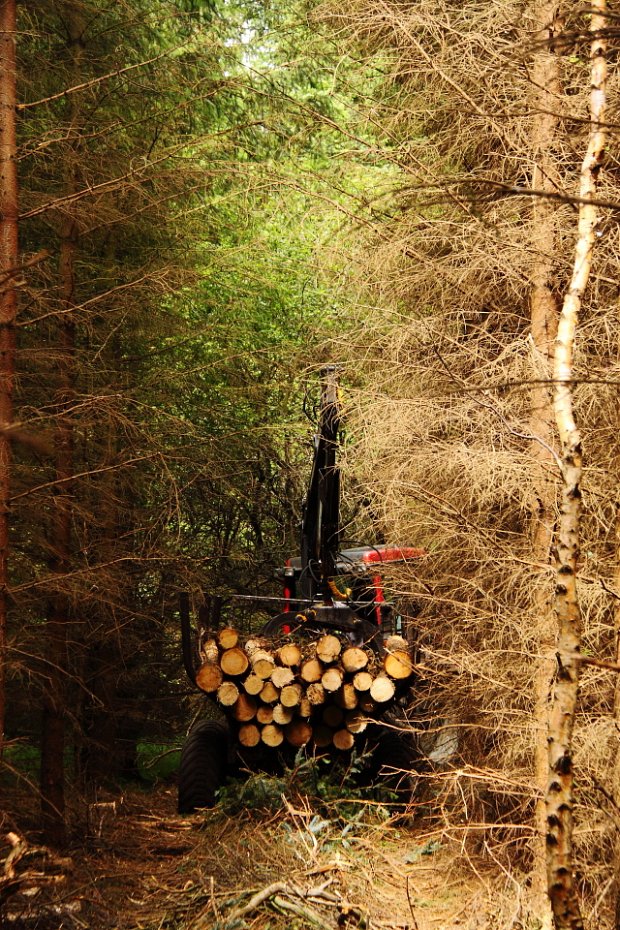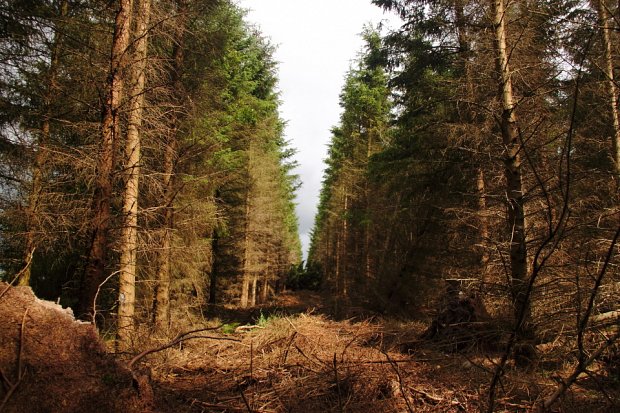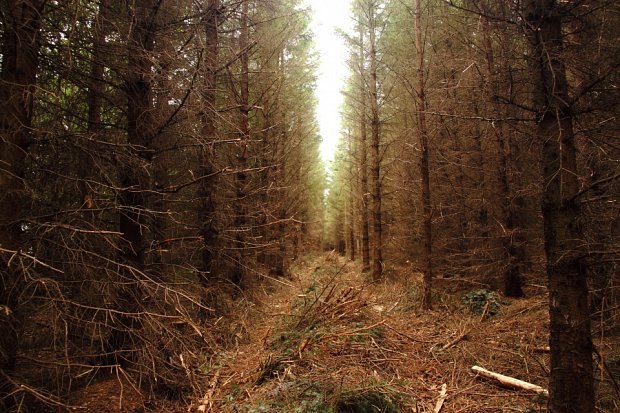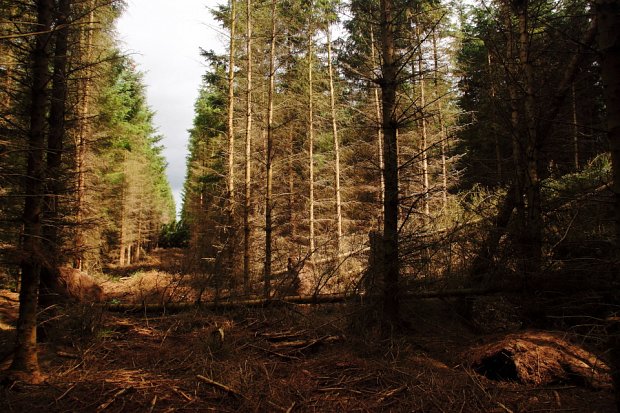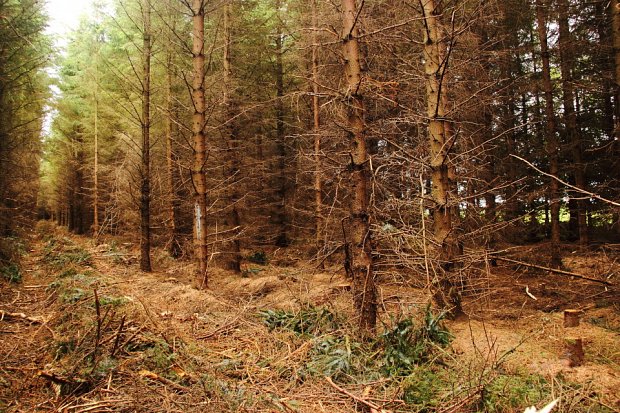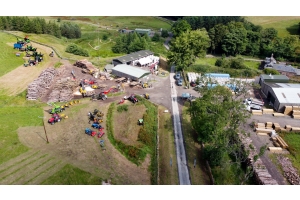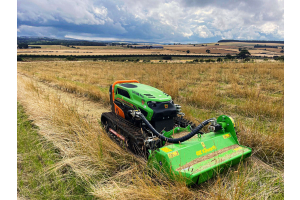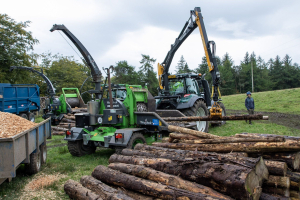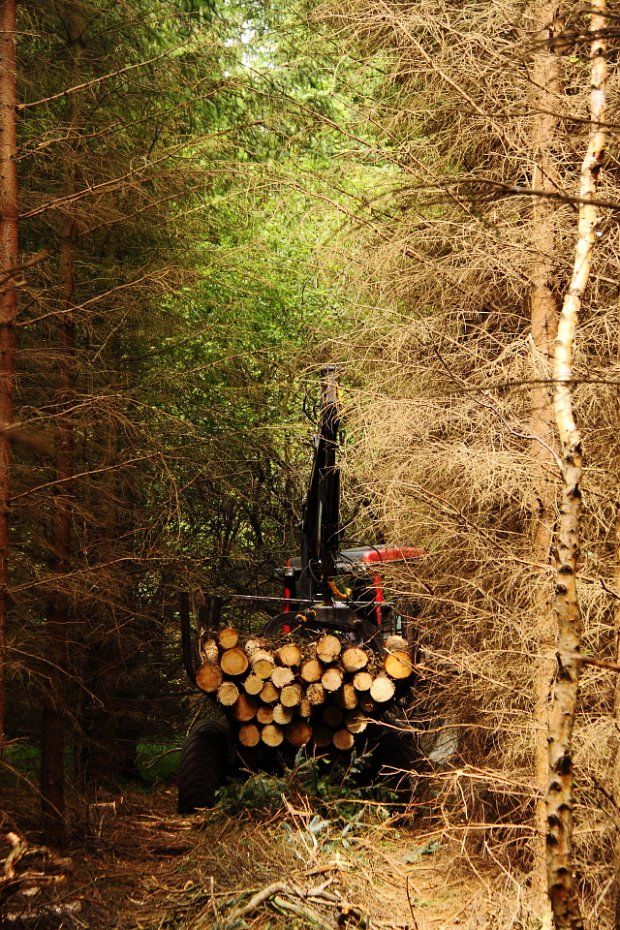
Here at Treeline our aim is to help you care for your woods in the best possible way, improving them for the future whilst ensuring they are best serving their purpose in the present.
To this end continual management through thinning can be important for achieving various goals, whether timber production, amenity, sporting or providing long term shelter and landscape benefits. Unfortunately thinning can also have the downside of making a woodland less stable in the short term, due to exposing trees to the wind where they wouldn't have been before. In order to reduce this risk you want to avoid opening up large gaps in the woodland canopy, allowing wind to get to trees which were previously sheltered by their neighbours.
To make a thinning operation economical you want to recover the timber removed, which usually requires the use of machinery (or horses) which need access throughout the woodlands. This is usually done by cutting 'racks', or rows of trees. The bigger the machinery used, the larger the access racks have to be to allow them to operate. We have concentrated on sourcing and investing in machinery which is small enough to carry out a sensitive job yet big enough to operate economically.
Below are some photo's comparing a woodland which has been thinned by large forestry machinery and a woodland that we thinned with our own machinery. The woods are the same age and planted in the same manner, (deep ploughing and 1.8m spacing). The large machinery had to take out two rows of trees which has opened it up greatly and has removed a large percentage of trees. Our machinery has only removed a single row of trees for access and selectively removed poorer trees from the remaining rows. This has double benefits of leaving a more complete canopy whilst also giving a more selective thin of predominantly weaker trees throughout the whole woodland.
The woodland with the large racks was thinned last year and has already sustained considerable wind damage...
Tractor and trailer extracting from one of the narrow racks
Large gaps in the canopy from taking out 2 rows of trees
The single racks in the woodland we thinned leaving a more even result with less exposure to the weather.
Wind damage originating from the wide racks
Intermediate thinning from the single racks enabling removal of specific trees throughout the wood

